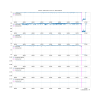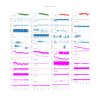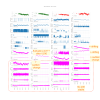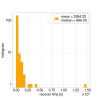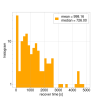I'm performing the statistical evaluation of silent run. In this thread, I will post the result.
- date of silent run
- start : 2022/12/28 9:18 UTC = 18:18 JST, gps = 1356254298
- related klog klog#24317
- end : 2023/01/03 7:00 UTC = 16:00 JST, gps = 1356764418
- start : 2022/12/28 9:18 UTC = 18:18 JST, gps = 1356254298
- duty cycle
- 54% = 275878 s / 510120 s
- total run time : 510120 s
- livetime of K1:GRD-LSC_LOCK_STATE_N == 10000 : 275878 s
- number of lock segment, that is, how many times K1:GRD-LSC_LOCK_STATE_N == 10000 from DOWN state.
- 913
- I re-generated the summary page of LSC duardian


